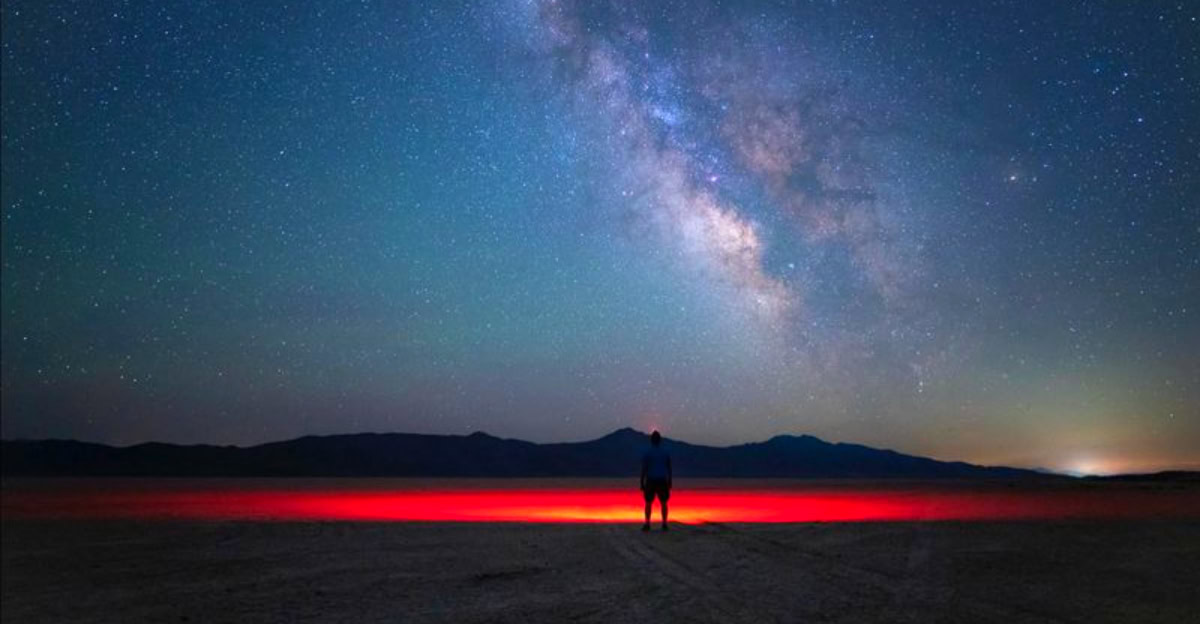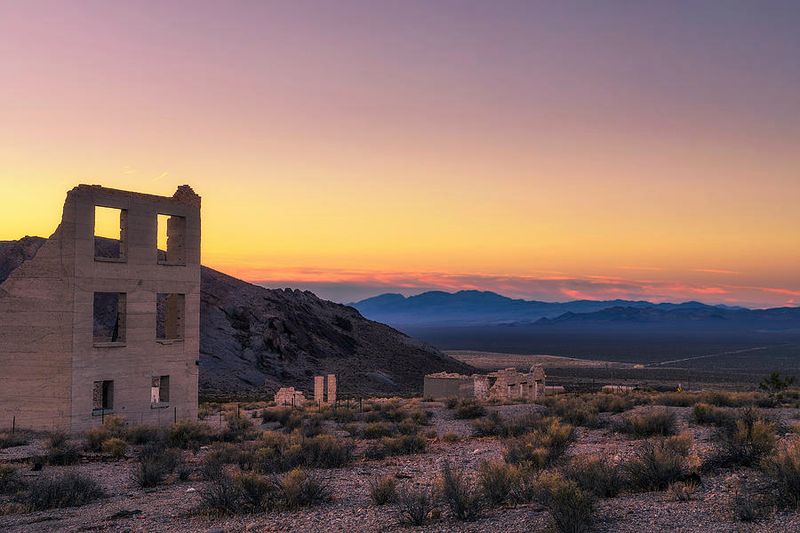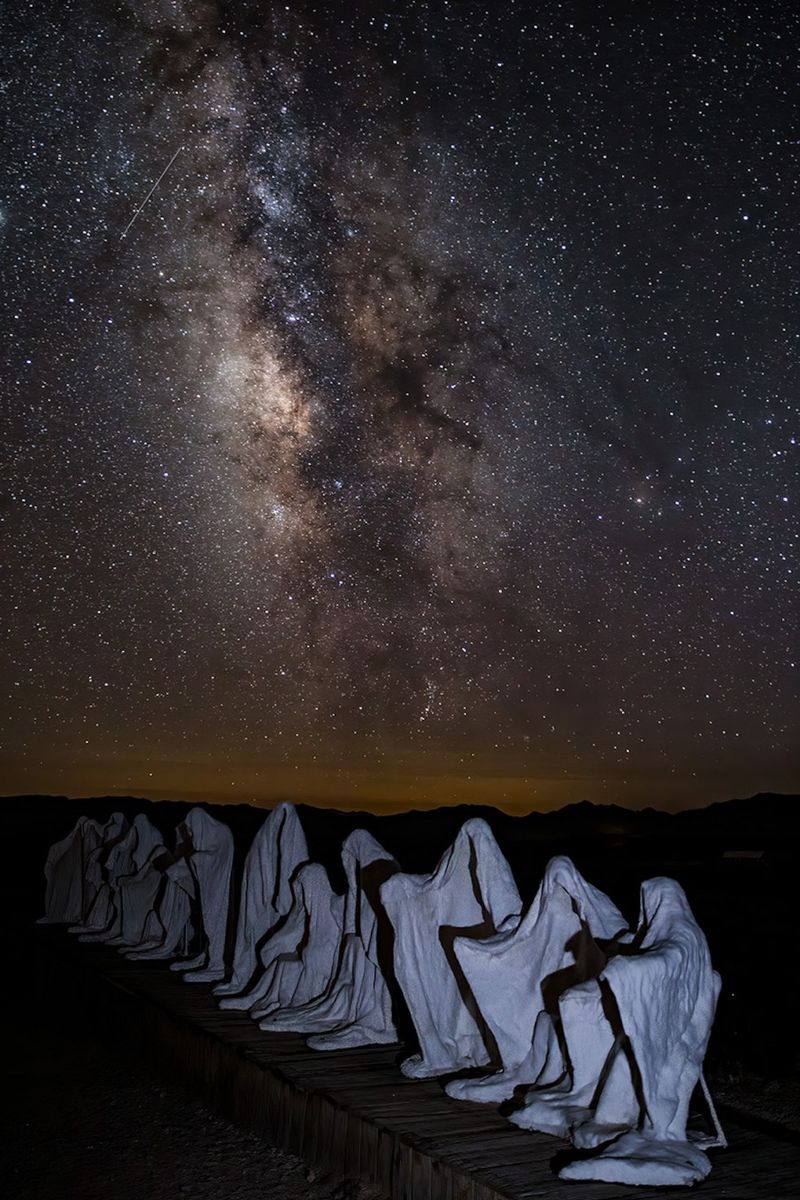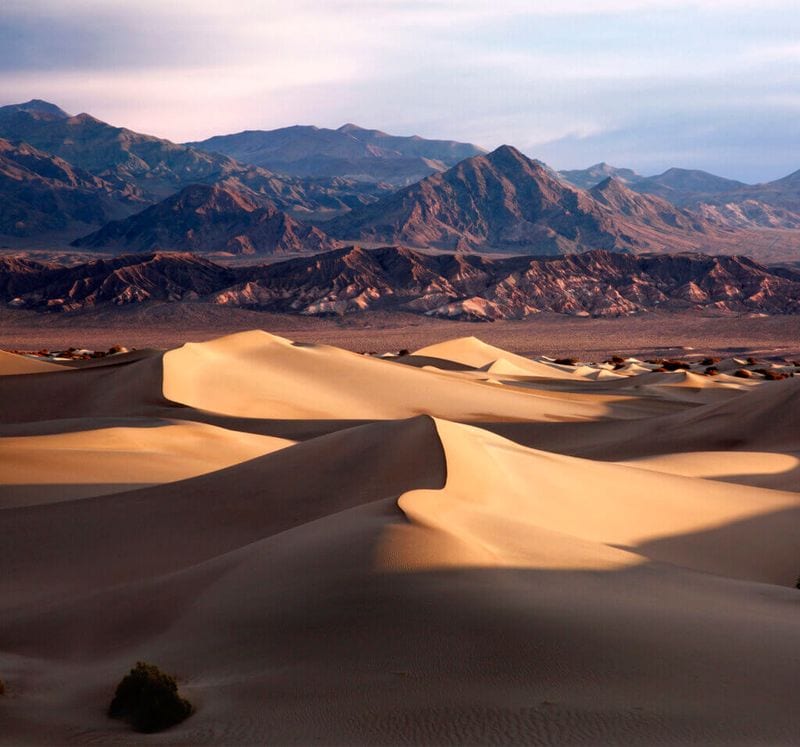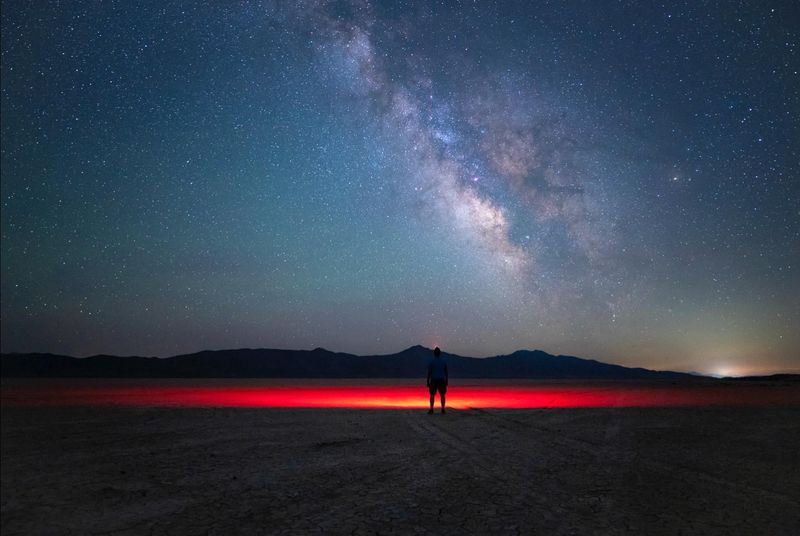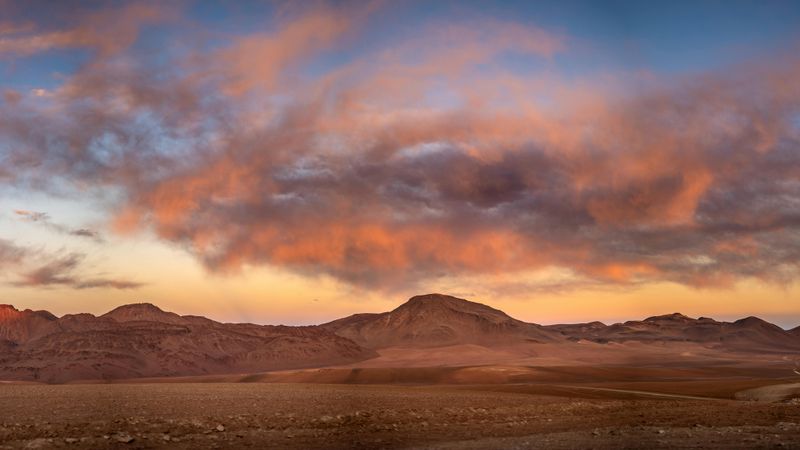Tucked between the neon glow of Las Vegas and the quiet mining history of Tonopah lies Beatty, Nevada – a small desert town with enormous visual potential. This unassuming gateway to Death Valley has become a secret treasure for photographers seeking authentic American West landscapes. From ghostly ruins to star-filled skies, Beatty offers endless opportunities to capture stunning images that tell stories of both past and present.
Rhyolite Ghost Town – Where History Stands Still
Just four miles west of Beatty, the abandoned buildings of Rhyolite tell silent stories through their weathered walls and empty windows. Once home to 10,000 hopeful miners during the gold rush, today only skeletal structures remain – creating perfect frames against the vast desert backdrop.
Morning light bathes the crumbling bank building and iconic bottle house in golden hues, while sunset casts long, dramatic shadows across the dusty landscape. The contrast between human ambition and nature’s reclamation creates compositions that are both melancholic and beautiful.
Pro tip: Visit during the “blue hour” just after sunset when the deepening sky creates a magical color palette against the silhouetted ruins. The cemetery on the town’s edge offers particularly poignant photographic opportunities with its weathered markers standing as final testaments to frontier dreams.
Goldwell Open Air Museum – Surreal Art in Surreal Landscapes
Where else can you photograph a ghostly rendition of The Last Supper against a backdrop of mountains and endless sky? The Goldwell Open Air Museum stands as one of America’s most unique outdoor galleries, featuring seven major sculptural installations that seem to emerge directly from the desert floor.
The stark white figures of the ghost-like “Last Supper” create an otherworldly scene that’s particularly striking at dawn or dusk. Belgian artist Albert Szukalski chose this remote location specifically for its dramatic natural setting, understanding how the harsh desert light would interact with his creations.
Photographers find endless creative possibilities as seasons and lighting conditions transform these strange sentinels. The museum’s location adjacent to Rhyolite allows you to capture both natural and artistic wonders in a single expedition – a truly one-of-a-kind photographic experience.
Death Valley Gateway – Desert Vistas Beyond Imagination
Beatty serves as the eastern gateway to Death Valley National Park, offering photographers access to some of North America’s most extreme and photogenic landscapes. The transition zones where Nevada meets California create visual feasts of contrasting textures, colors, and geological formations.
From Beatty, you’re just minutes from capturing the rippling sand dunes, colorful badlands, and salt flats that have made Death Valley famous among landscape photographers. The nearby Amargosa River creates surprising pockets of green against the dominant earth tones, while distant mountain ranges provide layered backdrops for panoramic shots.
The harsh beauty of this threshold between states attracts photographers year-round, though winter and spring bring more moderate temperatures and occasionally spectacular wildflower blooms. Early risers are rewarded with soft light sculpting the land into otherworldly formations that seem almost alien in their stark beauty.
Dark Sky Haven – Astrophotography Without Limits
When night falls over Beatty, the real magic begins. Far from major light pollution sources, this remote desert town offers photographers some of the darkest skies in the continental United States. The Milky Way appears so bright and detailed that it seems close enough to touch.
Beatty’s high desert elevation and dry climate create ideal conditions for astrophotography. Star trails above ghost town ruins, the galactic core rising over desert mountains, or meteor showers reflected in still waters – the possibilities are limitless. Local photographers know to watch for special events like lunar eclipses or the Perseid meteor shower in August.
Even beginners can capture remarkable night sky images here. The town’s friendly locals often share tips about the best locations and timing. Don’t forget to bring a red headlamp to preserve your night vision while setting up those long exposures!
Golden Hour Magic – When the Desert Truly Glows
Ask any serious photographer about Beatty’s greatest asset, and they’ll likely mention the quality of light. The clear desert air combined with wide open spaces creates lighting conditions that transform ordinary scenes into extraordinary images, especially during the golden hours.
Sunrise brings soft pinks and ambers that gradually illuminate the eastern faces of mountains and buildings. Sunset bathes everything in rich oranges and reds before surrendering to the blue hour’s ethereal glow. The low-angled light reveals textures in the landscape that remain hidden during harsh midday conditions.
The desert’s muted palette of sages, tans and rusty reds comes alive during these magical transition times. Even simple subjects like twisted Joshua trees, weathered fence posts, or abandoned mining equipment become compelling photographic subjects when bathed in this special light. Remember to arrive at least 30 minutes before the actual sunrise or sunset to catch the full progression of color!
